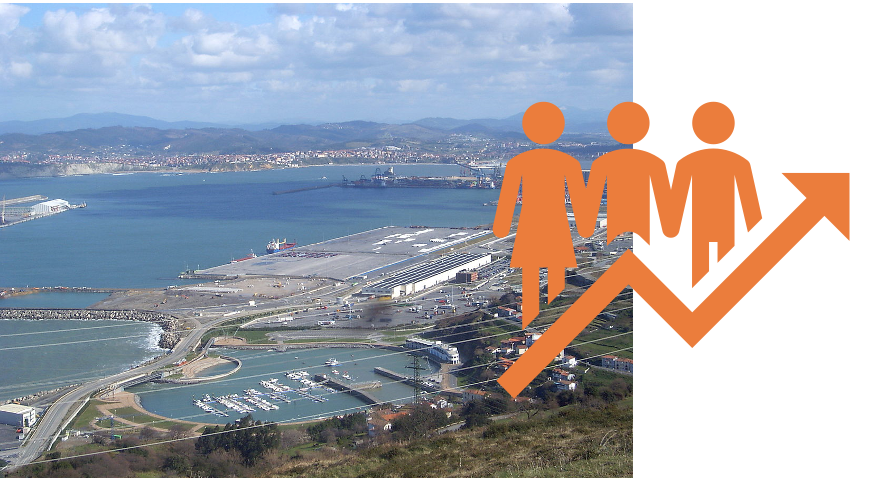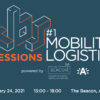Why ports need to become smarter: Port business-as-usual is under pressure?
1. Conservative management recipes destroy economic value
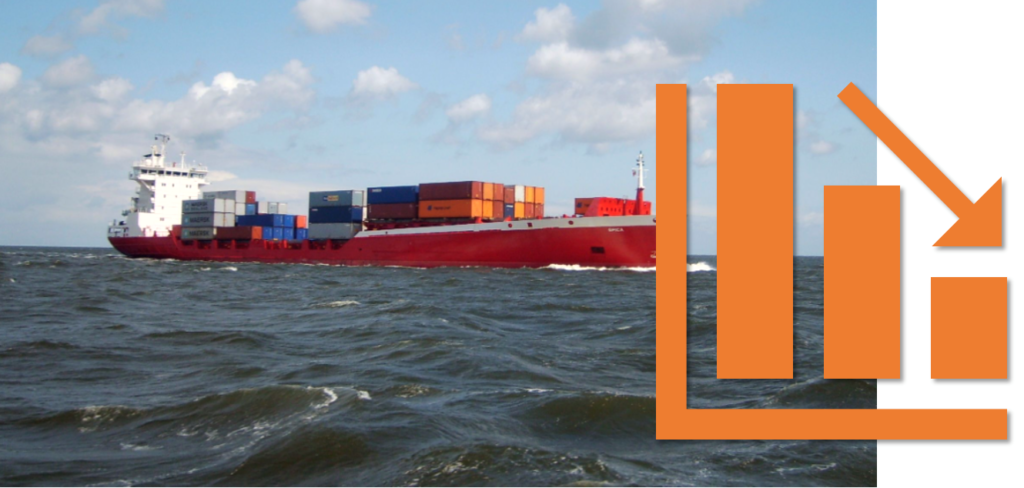
Old business models with their focus on physical trade volumes, cut-throat competition, commoditized service offerings, externalized environmental costs, protectionist and fragmented value chains, have outlasted their business- and societal usefulness. Logistics players across the chain operate at near-zero, or negative margins.
2. No license to operate without sustainability
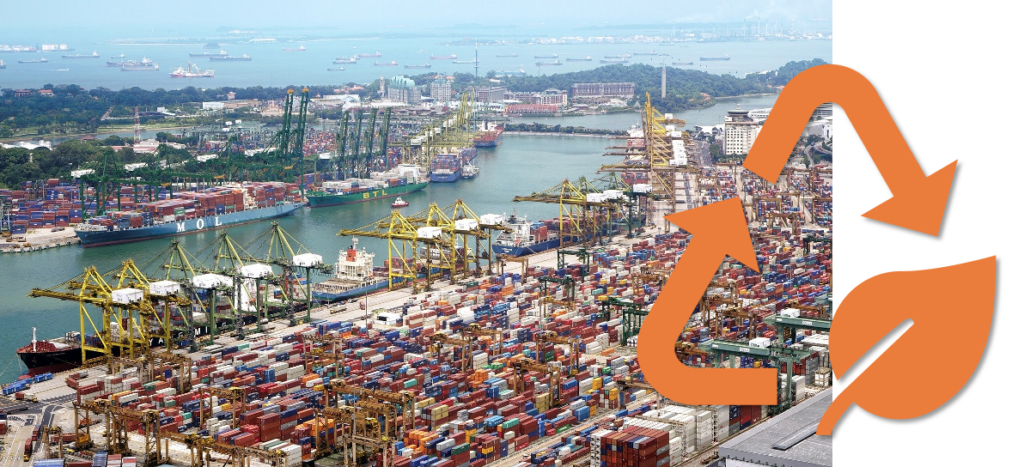
Shipping accounts for large and growing shares of global nitrous oxid (>30%); sulfur (9%) and greenhouse gases (3%) emissions. Whereas industries are undergoing a digital renaissance, the port and logistics sectors lag in Industry 4.0 adoption [1, 2].
3. Locked-in silos that are unable to innovate
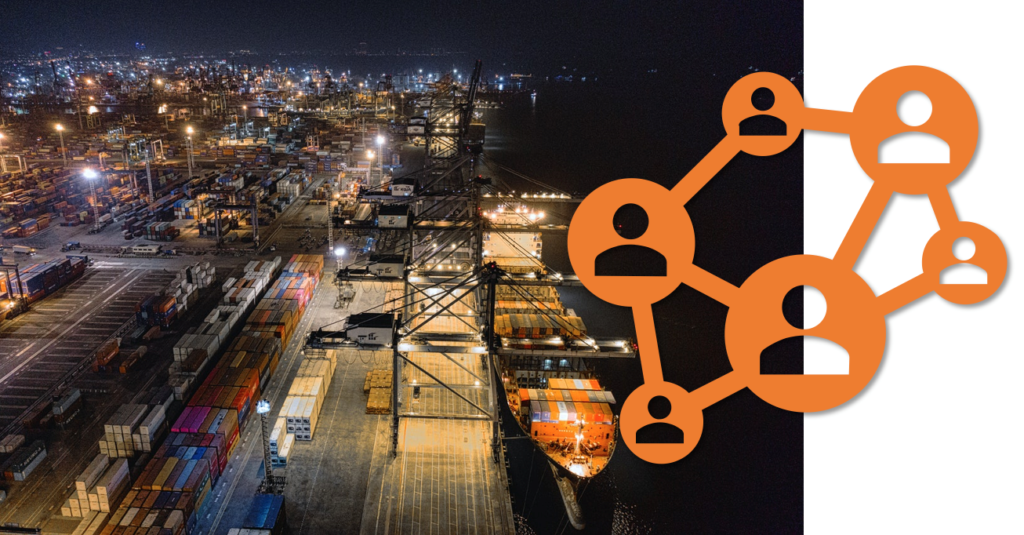
Rather than fully integrated in global supply chains, ports are “pockets of capacity that have been optimized in silos” (E. Verstraelen). The tyranny of the served market, with its free delivery and return offerings, has the supply chain locked-in into a price competition trap and into the optimization of old, silo-ed business models. This all comes at the expense of a proactive innovation- and customer orientation to sustainable development. A call for more connectedness, end-to-end efficiency, reliability and sustainability in port operations is driven by downstream dissatisfaction, government regulations and the influx of tech players who import the platform economics that drive disruptive growth in digital industries.
4. 4 smart port platform dynamics will drive economic growth and integration:
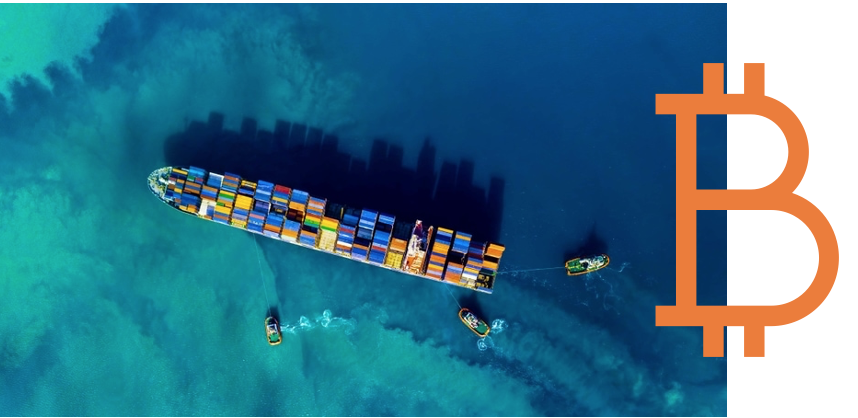
1. Vertically integrated global chain platforms (such as Tradelens) led by the carrier alliances and global digital integrators to increase transparency. They also centralize power, away from the local economic tissue, towards extremely concentrated platforms. This dynamic strengthens the position of shipping line consortia, which already physically dominate the chain, and large terminal operators, which have also started to join.
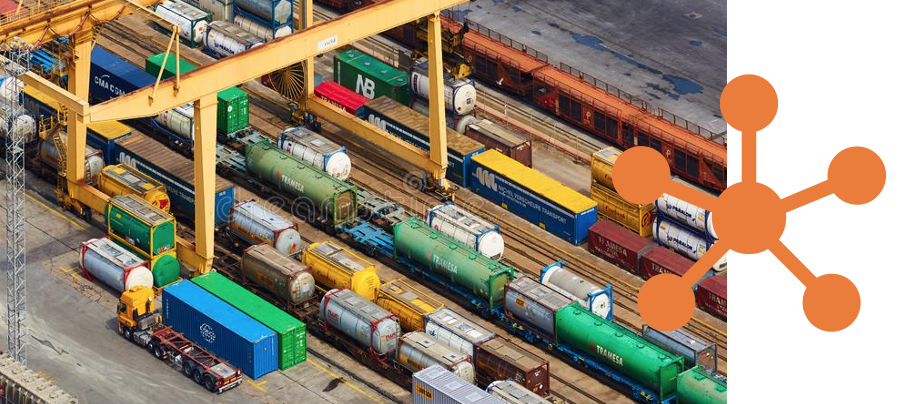
2. Locally clustered smart port and inland corridor platforms: port and hinterland community systems focused mainly on data aggregation. These platforms have a role to play as connectors to the port and hinterland networks, to the extent they are able to self-organize into data-sharing communities. Connecting smaller ports and inland hubs to the platforms provided by the ‘lighthouse’ ports will prevent that they stay behind in the digital integration of global supply chains.
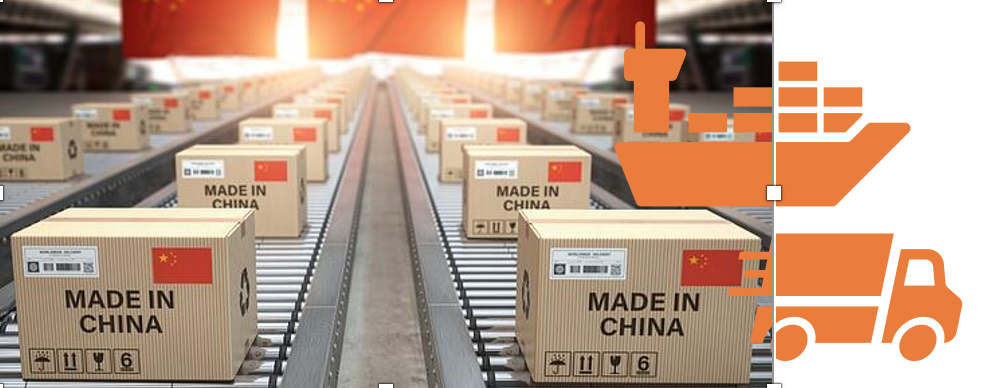
3. Backwards-integrating e-commerce giants such as Amazon and Alibaba upscaling vertical integration from parcel to container logistics. If global supply chains stakeholders do not offer integration and transparency, e-commerce giants have the power to vertically integrate with local service providers, effectively cutting out much of the existing integration (and efficiency)
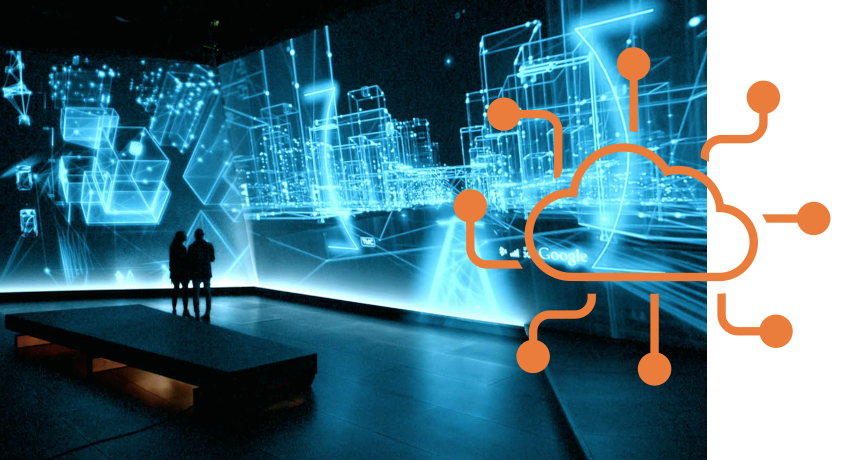
4. Industry newcomers from new technology fields (IoT, data science, embedded systems, …) unfold digital network economies into the port industry. Smart port tech start-ups and digital service providers are powered by port data platforms and will have the opportunity to build their own products niches and bring new technology into existing user applications and interfaces. These players will drive new forms of value creation and digital business.
With this Manifesto, we aim to instigate collective action to avoid that contemporary global data platform dynamics become the means to further increase local and regional digital gaps. We see that, if left unaddressed, dynamics 1 and 3 will help shipping lines and large global digital platform players consolidate their already asymmetric market positions to extreme levels of concentration. Compared to U.S. and Chinese players, our region (Europe) tends to react in a slow, top-down and fragmented approach to global platform dominance dynamics. Yet, in the emerging smart ports market, our region has unmistaken unique cards to play for market leadership. Realizing that potential will require aligned, market-oriented collective action across borders and sectors to accelerate smart port platform adoption, application innovation and the management of collective bottlenecks. The common smart port agenda aims to be a beacon to guide the development of a smart port ecosystem.
What does an ideal smart port future look like?
Ports and the regional economic networks they sustain will start operating as smart port ecosystems and thrive. By a smart port we mean a port that develops resilience and autonomy in its operations and infrastructure. A smart port is …
“a port that optimizes in-, port- and out-bound flows of goods and information, leads a sustainable development, guarantees safe, resilient and secure activities through the capabilities of its (extended) port community and enabling technologies.“
To become a smart port, we need to develop and show increased maturity in:
- Integration and efficiency of port operations
- Adaptive, balanced, effective and synchronized modality shifts
- Robust end-to-end cybersecurity
- Energy and environmental performance
- Digital capabilities: a digital talent pool and growth-supporting factor markets
We believe that port and logistics stakeholders can progress in their maturity by changing their mindsets, building critical mass and taking up collective action. The following guiding principles show how ports can reach a paradigm shift from a commoditized business silo towards a smart innovation ecosystem logic:
1. From price competition to co-opetition in a smart port ecosystem:
The competition game in the smart ports market will be played between different digitally centered ecosystems (driven by the 4 digital platform megatrends above). Success or failure in a world of ecosystems will be crucially determined by the capacity of businesses to envision the ecosystems, to define their viable role and to behave with ‘enlightened self-interest’. Such vision does not ignore the competition between European ports. However, it embraces the reality that competition for large flows is carried between competing cross-border logistics ecosystems catering the same hinterland. To influence the path of these large flows, operational efficiency and reliability, at the level of the regional port ecosystem, including its hinterland and short-sea corridors, is paramount.
2. From optimizing silos to connected and transparent supply chains:
In a smart port, digital solutions are draped around the physical layer as a “digital nervous system” (E. Verstraelen) and continuously sense what is happening in the port from different perspectives: operational, safety, security, and environmental. The basis for inter-organizational operational efficiency and reliability in port supply chains lies in making them more transparent and more connected. This evolution will also build trust among logistics players and customers in the port supply chain. Collaborative, open access data infrastructures and digital twinning of port infrastructure, processes and business models make this vision technically possible. Yet, it also requires that chain actors take the responsibility to share data, to connect with community platforms across the port, corridor or region, and to collaborate and co-invest in innovations that enable them benefits.
3. From commoditized volume business to sustainability-driven innovation:
Smart port business models do not only respect the sustainability of regional social, economic and natural resource bases, but are driven by innovations which embrace the growth markets embedded within societal sustainability needs [3]. Digitized cargo data avoids unnecessary physical moves. Better synchronized modalities reduce emissions, travel time and congestion. Circular solutions allow monetization of one player’s waste which serves as raw material for another’s process. Ports which are now often perceived to be on the wrong side of issues pertaining to climate, globalization or mobility, can change their image through sustainable innovation. As “ports are mostly gateways of globalization” (C; Chedot), innovating in sustainability and showing ports’ positive impact on society will positively affect the entire port community’s license to operate.
4. From ‘not invented here’ to a culture of collaborative and open innovation:
Growth of smart port solutions and users is driven by how open smart port platforms are set for tech providers to develop further solutions and business. Openness is also an issue in the interfaces with port users, as global platforms should be able to deal with the “non-homogenous maturity with regard to the technology used to process and exchange data” (M. Van der Velde). Moving towards smarter ports implies facilitating port users with different levels of robust data storage and exchange. Here, not the technical data sharing platform or APIs are the main issue, but rather raising the digital and collaboration maturity of the actors involved, as well as “dealing with the big elephant in the room, called trust” (E. Verstraelen).
5. From ‘beggar-thy-neighbor’ to connected small and large hubs across corridors:
There are major differences between ports and other nodes in the supply chain in terms of their data aggregation maturity. While major ports are rolling out their own large data aggregation efforts, shipping lines and downstream customers demand integration with these smart port platforms. It is a simplistic view that these information asymmetries should be exploited to squeeze out the next player in the chain, as the efficiency and reputation of the entire chain is what matters. Smart port platforms should allow “further connection to any local platforms or players” (M. Van der Velde). This connection will be a driver of connecting the port’s data with “satellite applications” which will make ports that already have a community system “even smarter” (C. Chedot). For smaller ports, without their own PCS, EDI or other platforms, it will level the playing field by enabling access to the user applications relevant to their stakeholders without heavy investments in own data aggregation infrastructure.
6. From a closed to a market-driven and stakeholder-inclusive network:
The initiative for innovation lies with port users and technology providers. Realizing innovation requires tangible commitment of the whole value chain that stands to benefit from it. “It is enough to have a handful of ships that are not able to provide you the needed information to shake the reliability of the system as a whole.” (A. Gale). Here, smart ports can be the facilitators of the ideas exchange between port users and technology providers, and sealing “a common dialogue” (M. Van der Velde) with other port stakeholders. Port authorities have a responsibility to create awareness, understanding, and interest in port innovations by communicating them towards societal stakeholders. To substantially improve their reputation, local communities should acknowledge the efforts of local port innovators. “The people living in port cities should show the same level of enthusiasm about the implementation of a new innovating technology in their port, as they are enthusiast about a new technology used in their smart-phone.” (J. Sanchez).
7. From protective chain positions to customer-first ecosystem membership:
Currently, most innovation impulses towards smart ports originate from actors in the fringes of/or even outside the logistics chain. Making port supply chains smarter is harnessing the power of innovation-demanding shippers, digital start-ups challenging the status-quo, data platforms pushing towards integration and local or regional governmental pressure. Smart port actors can find drivers towards innovation in collaborative actions aimed at improving the value creation towards the shared market (customers). This activity will increase the total potential value to be distributed later among the initiating parties [4]. For smarter ports, port and logistics stakeholders will need to develop in common scalable products and services, focusing on the “collective competitive advantage” (E. Verstraelen), before they enjoy benefits.
8. From pipeline businesses to smarter network economics at a European level:
Digital platforms can generate exponential top-line growth through network effects. These network effects can be retrieved in combination with bottom-line economies of scale and scope. For port users, network economics generates an increasing diversity of smart port applications, while dramatically reducing the development cost per application (once a platform gains traction). Creating a smarter network requires an ambition spanning the current boundaries alone. “It is about time to make concrete steps towards a regional or European scale data hub.” (M. Van der Velde).
Who we are?
We are key economic, institutional, technology and scientific representatives with a stake in the development of new and smarter operating models for port activities in Europe. SPEED agrees and endorses the below principles as they contribute to building future-proof Smart Port Ecosystems. We have authored this manifesto because we believe that the time has come for smart ports. The Smart Port manifesto is the collaborative result of work by a cross-border agenda-setting body, a strategic analysis by Antwerp Management School and interviews with thought leaders from the ports of Antwerp, Calais, Hamburg, London and Rotterdam, as well as from the international port cities association and IPCSA (see Annex I).
Annex I: Contributors to the manifesto
Thought leaders interviewed
Erwin Verstraelen, Port of Antwerp
Marten Van der Velde, Portbase Rotterdam
Stefan Breitenbach, Port of Hamburg
Cyril Chedot, Port de Calais
Alistair Gale, Port of London
José Sanchez, AIVP
Richard Morton, PCSA
Dirk Koppenol, Smartports.nl
Prof.dr. Tom Van Woensel TU Eindhoven
Members of the agenda-setting board
Johan Vanwyngene, DP World
Rolf Schudde, Port of Amsterdam
Piet Opstaele, Port of Antwerp
Prof.dr. Thierry Vanelslander, University of Antwerp
Cees-Willem Koorneef PortXL
Steven Wood, Digital Catapult
Anna Melsen, i-Trans
Alex Van Breedam, Tri-Vizor
Christophe Chauvin, Nov@Log
Kris Neyens, VIL
Peter Grant, WSX
Steven Schutter, Nxtport
Jan Van Dooren, Port+
Rochdi Merzouki, Université Polytechnique de Lille
Jurgen Huygh, OTM & Shipper’s council
Arjan Haring, Jhieronymus Academy of Data Science
Authors of the manifesto and the strategic analysis
Prof. dr. Wouter Van Bockhaven, Antwerp Management School
Dr. Valentin Carlan, University of Antwerp
Yassin Boullauazan, Antwerp Management School
Annex II: Bibliography
1. Brettel, M., et al., How virtualization, decentralization and network building change the manufacturing landscape: An Industry 4.0 Perspective. International Journal of Mechanical, Industrial Science and Engineering, 2014. 8(1): p. 37-44.
2. Commission, E., Europe’s Digital Progress Report (EDPR) – Integration of Digital Technology. 2017.
3. Simanis, E. and S. Hart, Innovation From The Inside Out. Mit Sloan Management Review, 2009. 50(4): p. 77-86.
4. Priem, R.L., A consumer perspective on value creation. Academy of Management Review, 2007. 32(1): p. 219-235.
5. Gandhi, P., S. Khanna, and S. Ramaswamy, Which industries are the most digital (and why). Harvard Business Review, 2016. 1.
6. Iansiti, M. and R. Levien, Strategy as ecology. Harvard Business Review, 2004. 82(3): p. 68-+.
7. Stabell, C.B. and O.D. Fjeldstad, Configuring value for competitive advantage: On chains, shops, and networks. Strategic Management Journal, 1998. 19(5): p. 413-437.
8. Simon, H.A., A mechanism for social selection and successful altruism. Science, 1990. 250(4988): p. 1665-1668.
9. Frimer, J.A., et al., The integration of agency and communion in moral personality: Evidence of enlightened self-interest. Journal of personality and social psychology, 2011. 101(1): p. 149.
10. Porter, M.E. and M.R. Kramer, Strategy and society: The link between competitive advantage and corporate social responsibility. Harvard Business Review, 2006. 84(12): p. 78-92.
